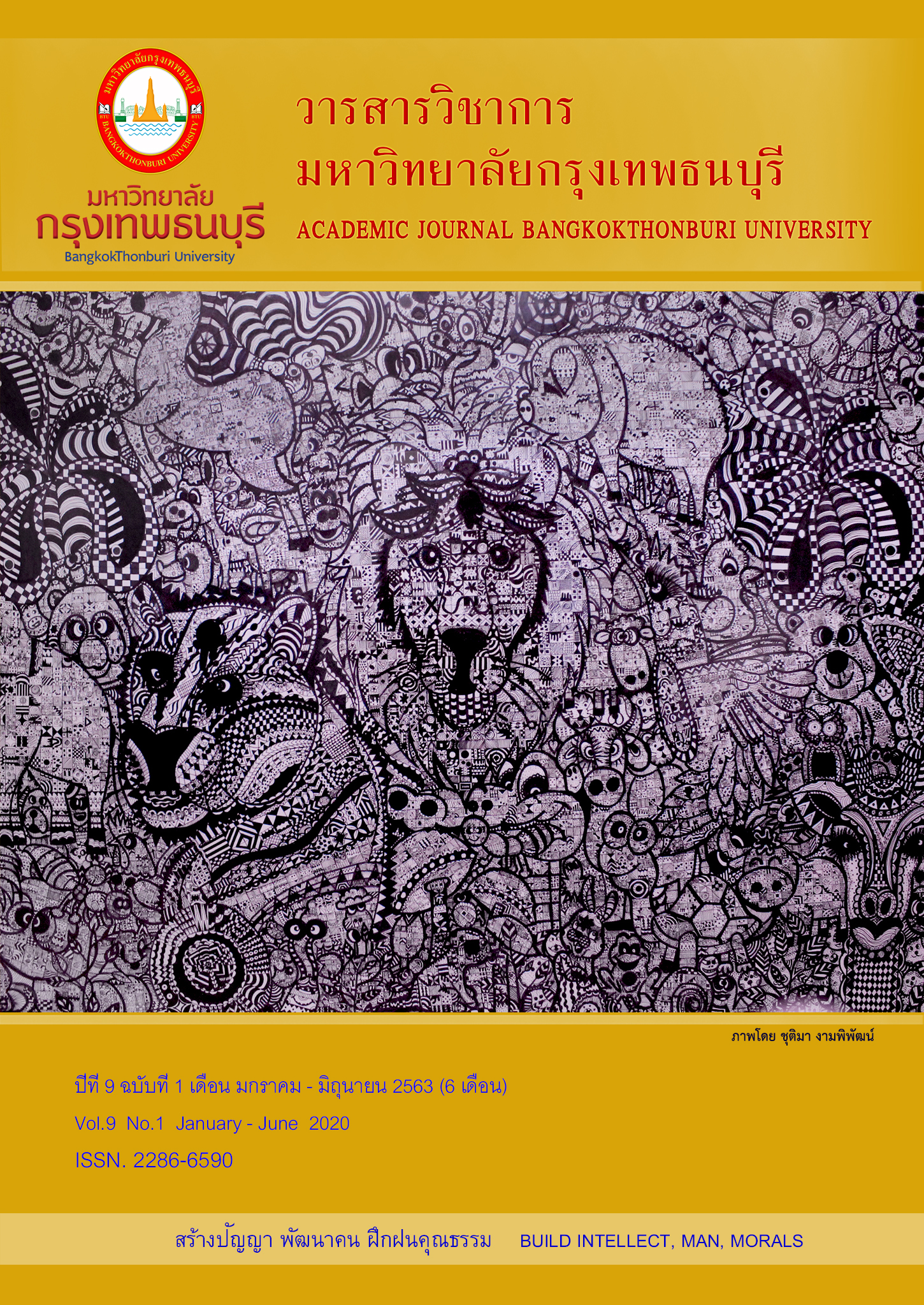The Study Causal Relationshipof Motivation AffectsOrganizational Loyalty: Empirical Datafrom Employeesof Modern Trade
Main Article Content
Abstract
The study attempted was test the goodness of fit of model and to study causal relationship of motivation affects organizational loyalty of employees of modern trade. The sample of this research included employees of a modern trade firm that was selected by using a purposive sampling. A questionnaire was used as a tool to collect data from a sample of 400 sample. The data were analyzed using descriptive statistics including frequency, percentage, mean and standard deviation and inferential statistics using structural equation modeling.
The findings found that: structural equation modeling of causal relationship of motivation affects organizational loyalty of employee of modern trade also correlated with the empirical data where Chi-square = 53.497, p-value = 0.000, Chi-square/df = 2.547, GFI =0.976, AGFI =0.924, NFI =0.966, CFI = 0.978 and RMSEA= 0.064. and hypothesis testing indicated that: motivation including motivational factors and hygiene factors affects organizational loyalty of employee of modern trade, at statistical significance level of 0.05 and predictive power of 67%
Article Details
References
Kalyanamitra, K. (2016). Two powerful motivation factors to success. Valaya Alongkorn Review, 6(3), 175-183.
Ocharoen, H. (2016). Labor market situation. Thai Labour Market Journal, 24(6), 1-8.
Omar, M. W. et al. (2010). Employee motivation and its impact on employee loyalty. World Applied Sciences Journal, 8(7), 871-873.
Puangyoykeaw, K. et al. (2018). Job embeddedness theory: A literature review. Journal of Management Science Nakhon Pathom Rajabhat University, 5(2), 161-173.
Raminthra, W. (2018). Wholesale business, retail, provincial “adapt survive”: Case study of wholesale and retail businesses in the Southern region. Bangkok: Bank of Thailand.
Suksawat, J. (2014).The analysis of the organizational loyalty indicators of personnel in basic education school. Veridian E-Journal, 7(2), 173-186.
The Siam Commercial Bank Public Company Limited. (2011). Thai retail opportunities in a new context.Bangkok: Author.
Vanichbuncha, K., & Vanichbuncha, T. (2015). Using SPSS for Windows for data analysis. (27th ed.). Bangkok: Samlada.
Varma, A. J., Patil, K., & Ulle, R. S. (2018). An empirical study on job satisfaction and employee loyalty. Journal of Emerging Technologies and Innovative Research, 5(8), 784-791.
Yamane, T. (1973). Statistics: An introduction analysis (3rd ed.). New York: Harper and Row Publication.
Zikmund, W. G. et al. (2010). Business research methods (8th ed.). Australia: South Western Cangage Learning.
Kalyanamitra, K. (2016). Two powerful motivation factors to success. Valaya Alongkorn Review, 6(3), 175-183.
Lukwago, G. et al. (2014). Using Herzberg’s two factor theory to develop a construct validity for motivation of employees in Uganda’s National Agricultural Research Organization (NARO): A preliminary analysis. Global Journal of Commerce and Management Perspective, 3(3), 59-65.
Prachachat. (2020). Management By“CMG”,communication is the heart of work. Retrieved March 20, 2020, fromhttps://www.prachachat.net/csr-hr/news-411564
Sekhar, C. et al. (2013). A literature review on motivation. Glob Bus Perspect, 1, 471-487.


